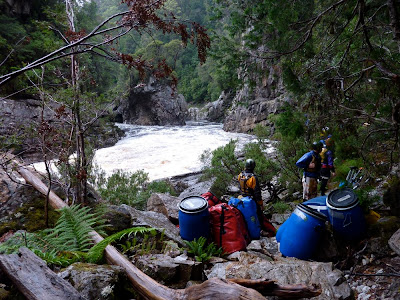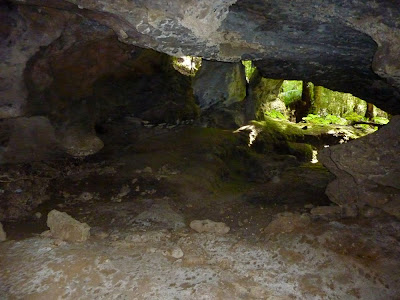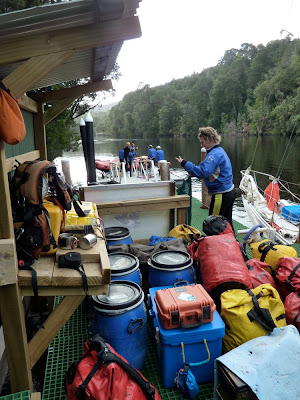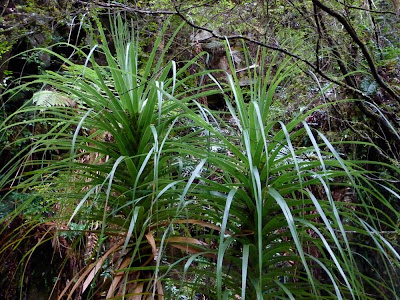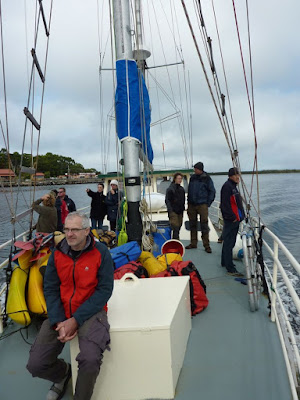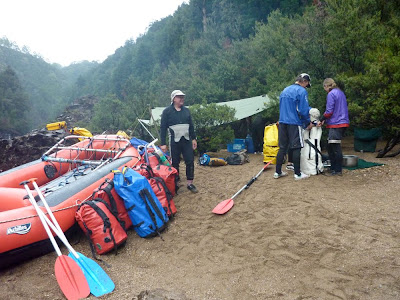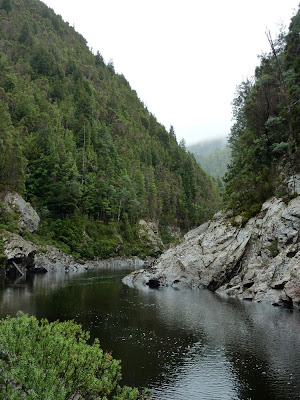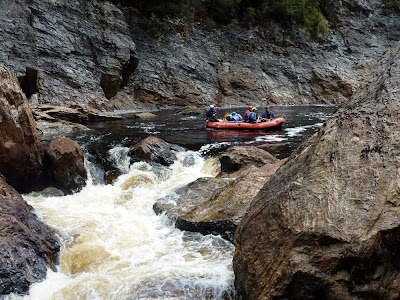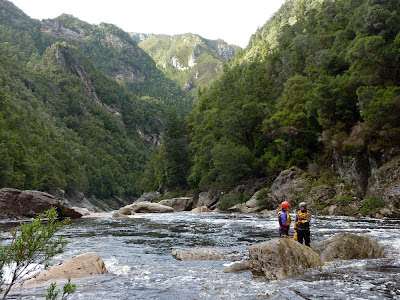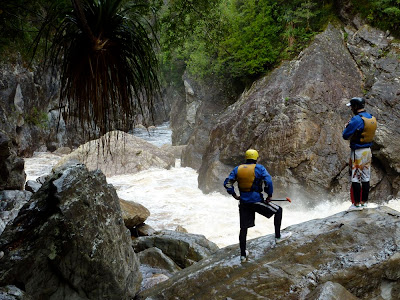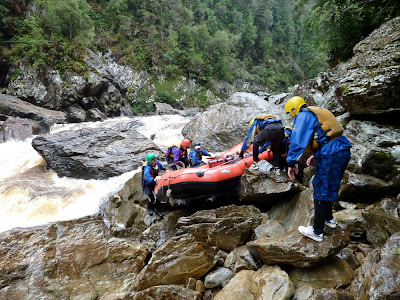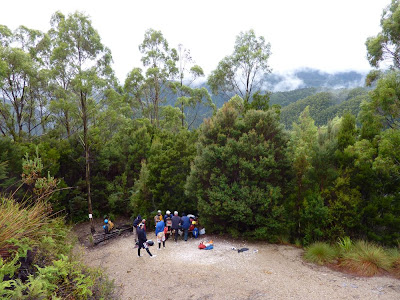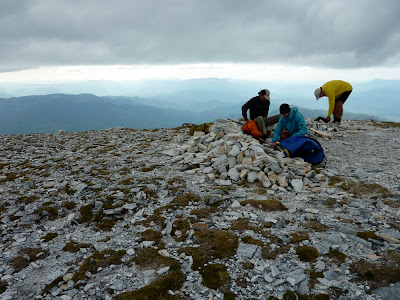After a few days with rain and rather wet campsites, the campsite on day 7 was a very welcome change, a rock ledge under an overhanging cliff. Lots of dry space to sleep, hang out our wet gear, walk around and eat. The river kept rising and the guides suggested that we take a rest day here on day 8. Normally it would take a good 2 days of mostly paddling to get from here to the jetty, but as the river was so high they thought it would be no problem doing it in one day. And as the river was so high, all the nice campsites along the lower Franklin would be under water and the only campsites left were likely to be infested with leeches. So day 8 was a slow day with lots of food, practising safety rope throwing, and half of the group brought the rafts down some exciting rapids. On day 9 we had the last rapids and thanks to the high water we even rafted the Big Fall, which normally needs to be portaged. After Big Fall the river calmed down and the landscape changed with some beautiful limestone cliffs. We stopped at the Kuti Kina cave, a cave well used by aboriginals during the last ice age as shown by a large number of animal bones. The Franklin river joined the Gordon river, and a couple of kilometers paddling brought us to the jetty, the end of the rafting trip. A last camp under the tarp on the beach next to the jetty, deflating the rafts, sorting and packing the gear and a food feast to try to finish all the food. Later that evening the sailing boat the Stormbreaker arrived at the jetty with a couple of tourists onboard who were all warned that we would be very smelly. Day 10 had an early start with opera music from the Stormbreaker as our wake up call. Breakfast and later lunch onboard the Stormbreaker as it was quietly motoring down the misty Gordon river and across Macquarie Harbour towards Strahan. From Strahan a long 6 hour or so bus trip along winding but scenic roads back to Hobart, where we could enjoy a good hot shower and change into clean clothes that we had stored in the friendly Astor Hotel. A great trip!

The hut at lower Gordon camp, the remains of the Hydro Electricity Commission camp from when they had started the development of the Franklin river dams.
Strahan
